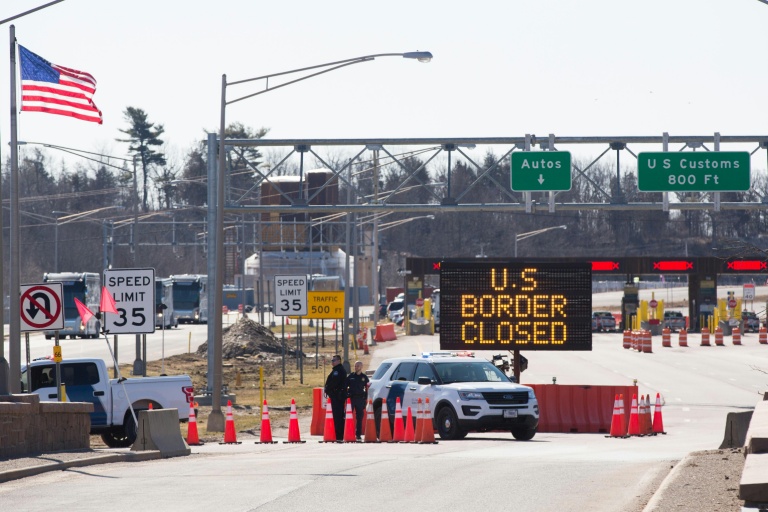N American trade pact takes effect in pandemic-ravaged world
()
Starting Wednesday, the United States-Mexico-Canada Agreement will bind nearly half a billion consumers in a single market, where trade between the three economies that add up to about 27 percent of the world’s GDP hit $1.2 trillion in 2019.
But that was before COVID-19 broke out. Now, the borders between the countries are partially closed, and the IMF is forecasting severe drops in all three North American economies this year.
The pact replaces the 1994 North American Free Trade Agreement (NAFTA) and was negotiated after attacks by US President Donald Trump, who said it destroyed American jobs and was unfair.
The “entry into force of USMCA is a key part of a broader trade agenda, the goal of which is to pursue free, fair and reciprocal trade with all our trading partners,” US Deputy Under Secretary for International Trade Joseph Semsar said Tuesday.
“We believe USMCA will ensure North America remains the world’s economic powerhouse, and that the agreement will create high-paying jobs for Americans, Canadians and Mexicans,” he said in a videoconference organized by the Washington-based Wilson Center.
– New rules –
Trump pushed Canada and Mexico to come to the bargaining table, and following marathon talks, the three parties signed the initial version of the agreement in November 2018.
Mexico ratified it in December 2019, and Trump signed the pact into law in January after amendments demanded by Democratic lawmakers. Canada’s parliament adopted it in March.
The
USMCA
changes rules on auto manufacturing to boost US jobs, including requiring that close to half of North American auto production come from higher paid workers, as well as imposing tougher labor provisions that obliged Mexico to reforms its laws.
It remains to be seen if the measures will achieve Trump’s goal of creating more employment at American plants: some Japanese firms have opted to raise wages in Mexico by as much as three times rather than move production to US factories, according to reports.
While experts worry the rule changes will raise costs for automakers and prices for car-buying consumers, the USMCA also updates rules on e-commerce, intellectual property protections and dispute settlement for investors, improving on NAFTA.
“We think now’s the time to be thinking about our competitiveness together, and our ability to innovate to… preserve jobs that allow us to be globally competitive,” Canada’s Chief Trade Commissioner Ailish Campbell said at the Wilson Center.
– Turbulence ahead –
But first the countries will have to get through this year, when the IMF projects the US economy will shrink by eight percent, Canada by 8.4 percent and Mexico by 10.5 percent.
US borders are also closed to non-essential travel until July 21 due to the pandemic, though cross-border trade is exempted.
The deal nonetheless gives Trump — who has pursued multiple trade disputes, notably with China and the European Union — an accomplishment to campaign on ahead of what is expected to be a tough re-election battle in November.
US Trade Representative Robert Lighthizer has vowed that Washington will monitor the deal’s enforcement from day one.
He signaled the US may file a complaint over Mexico’s failure to approve American biotechnology products, and is also scrutinizing Canada’s protected dairy sector.
The IMF said the new deal is positive for Mexico, but will not make up for the fall in investment and expected economic downturn caused by the coronavirus over the next two years.
Mexican Undersecretary for Foreign Trade Luz Maria de La Mora noted that the United States is Mexico’s top trading partner, and said she expected the deal to pay off in years ahead.
“My desire is that, one year from now, we will be able to be back on track in terms of the activity in North America and be able to maintain that dynamism,” she said at the Wilson Center.
Disclaimer: Validity of the above story is for 7 Days from original date of publishing. Source: AFP.


